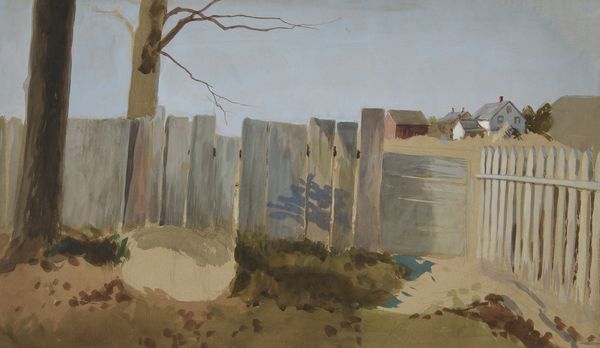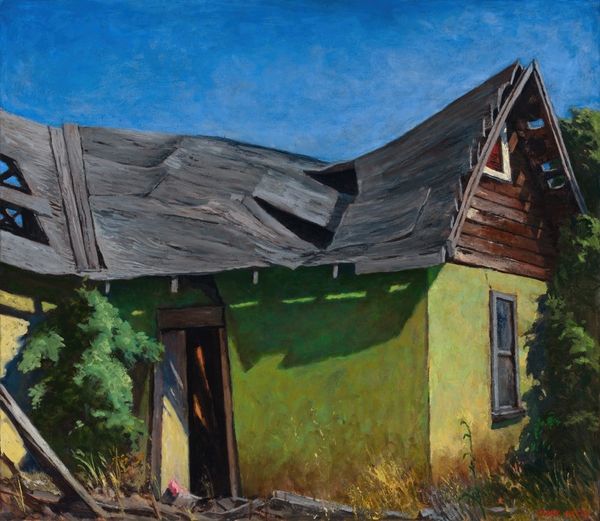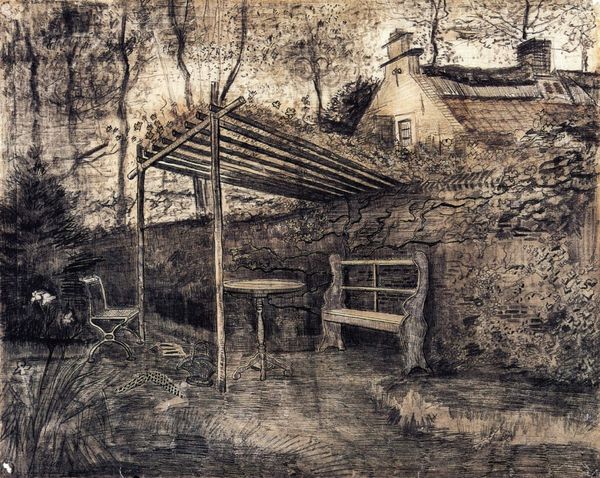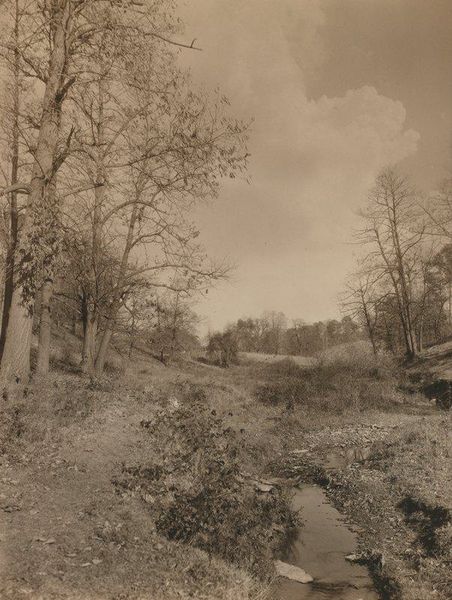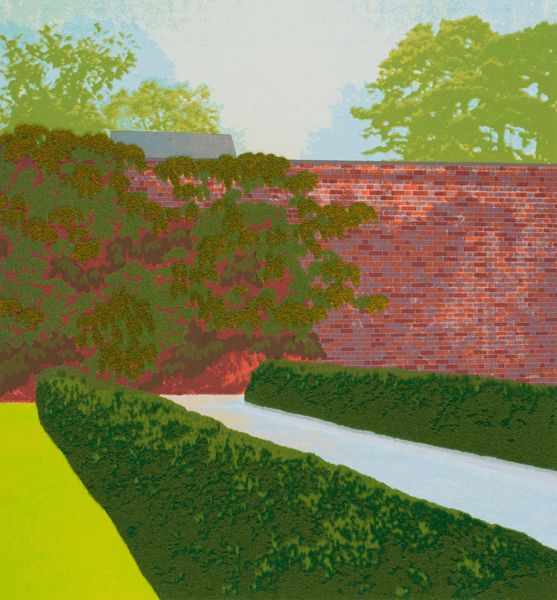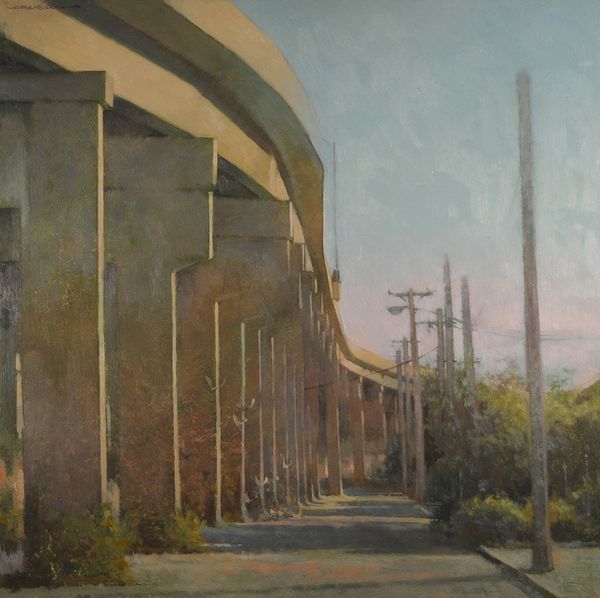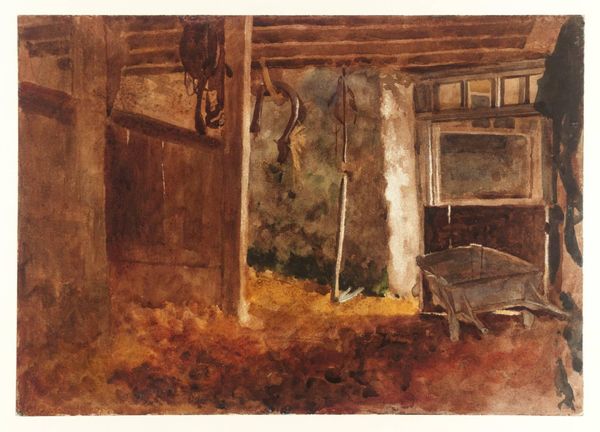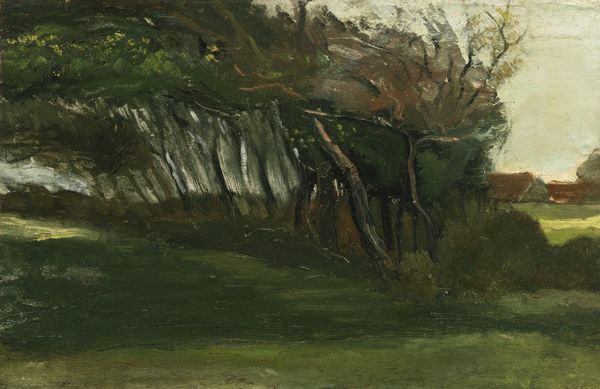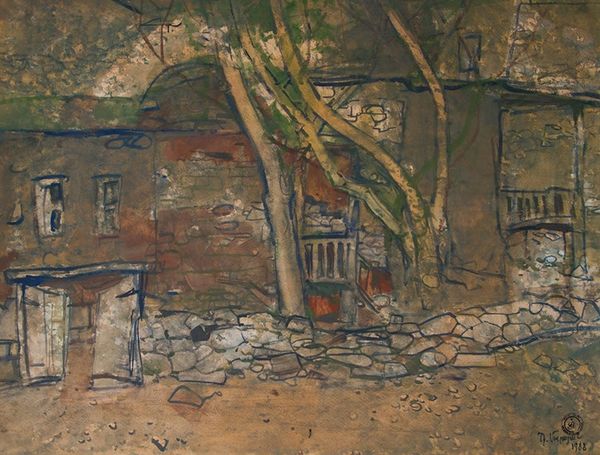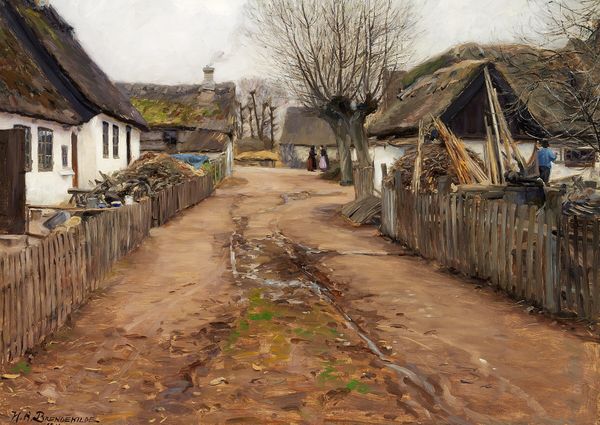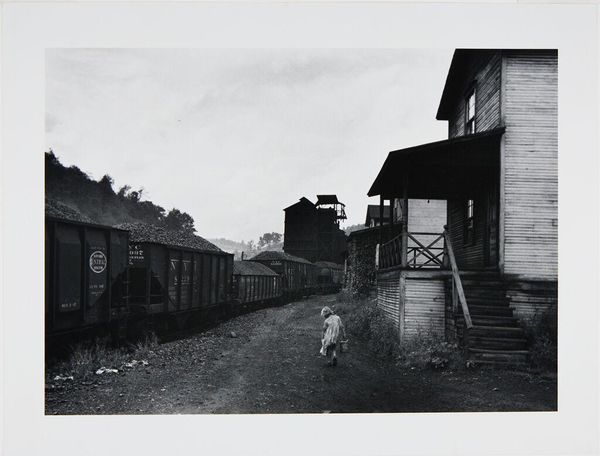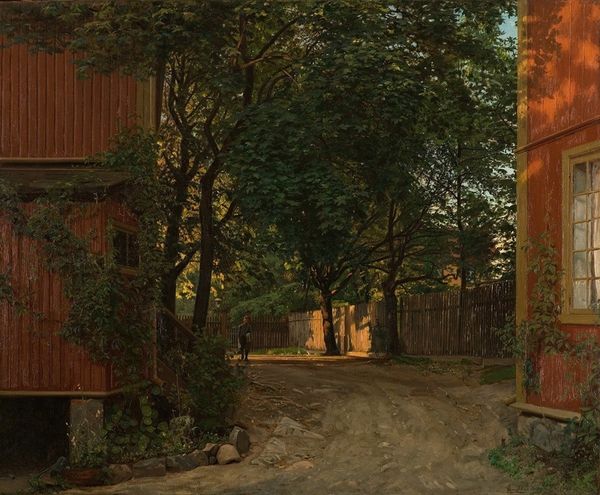
Dimensions: support: 917 x 1215 x 52 mm
Copyright: © George Shaw | CC-BY-NC-ND 4.0 DEED, Photo: Tate
Editor: So, this is George Shaw's "Scenes from the Passion: Late," it doesn't have a date listed, but it's in the Tate collection. I'm struck by how ordinary and a bit sad this row of garages looks. What do you make of it? Curator: It's interesting you use the word "sad". Shaw often presents overlooked, banal scenes, inviting us to consider the social and cultural narratives embedded within them. What kind of narratives do you think the artist is trying to tell? Editor: I guess the graffiti hints at some kind of social commentary, maybe about neglect or forgotten spaces? Curator: Exactly. The Passion, of course, alludes to intense suffering. By juxtaposing this with the mundane, Shaw critiques how society treats its marginalized spaces and the people within them. It's a powerful commentary on contemporary life. Editor: I see. It makes you think about the stories behind these places and why they look the way they do. Curator: Indeed. Art like this encourages us to be more aware of the social realities that often go unnoticed.
Comments
tate 6 months ago
⋮
http://www.tate.org.uk/art/artworks/shaw-scenes-from-the-passion-late-t07945
Join the conversation
Join millions of artists and users on Artera today and experience the ultimate creative platform.
tate 6 months ago
⋮
This painting depicts a derelict row of garage units in a semi-rural setting. Dense vegetation behind the units shuts out the sunlight pouring through the upper branches of trees standing above tall shrubs. A muddy track in front of the garage doors stretches across the foreground to a vanishing point at the left side of the painting. Patchy grass and weeds growing at the base of the doors suggests that they have not been used for a long time. Piles of copper leaves accumulated against the closed doors and sprinkled over the grass and muddy track indicate that it is late in the year as well as, possibly, late in the day. The vegetation is dense green at the level of the garage units, fading to lighter green where the sunlight penetrates it higher up. In places the leaves have turned to orange and yellow, deepening to a darker reddish brown. Leafless twigs sticking up above the garage roofs and shrubbery form a pale silhouette against the uniformly beige-coloured sky. The grey garage doors are scrawled with graffiti. Several are missing, leaving dark holes in the row of perspectivally diminishing units. In the foreground on the right, a door is raised at half mast, opening up a large black space inside the unit and casting thick shadows extending over the grass on the track. The door of the next unit is missing; a panelled wooden interior gleams dully out of the darkness from between the white-painted posts which separate the units. Like all Shaw’s paintings, Scenes from the Passion: Late was made using Humbrol Airfix enamel paint in a range of seven colours. Manufactured for the use of hobbyists and model-makers, this paint has a glossy, reflective surface. It is suitable for rendering intricate detail and Shaw’s use of it in the ‘realistic’ depiction of nature recalls the work of such pre-Raphaelite painters as John Everett Millais (1829-96).
